Results
-
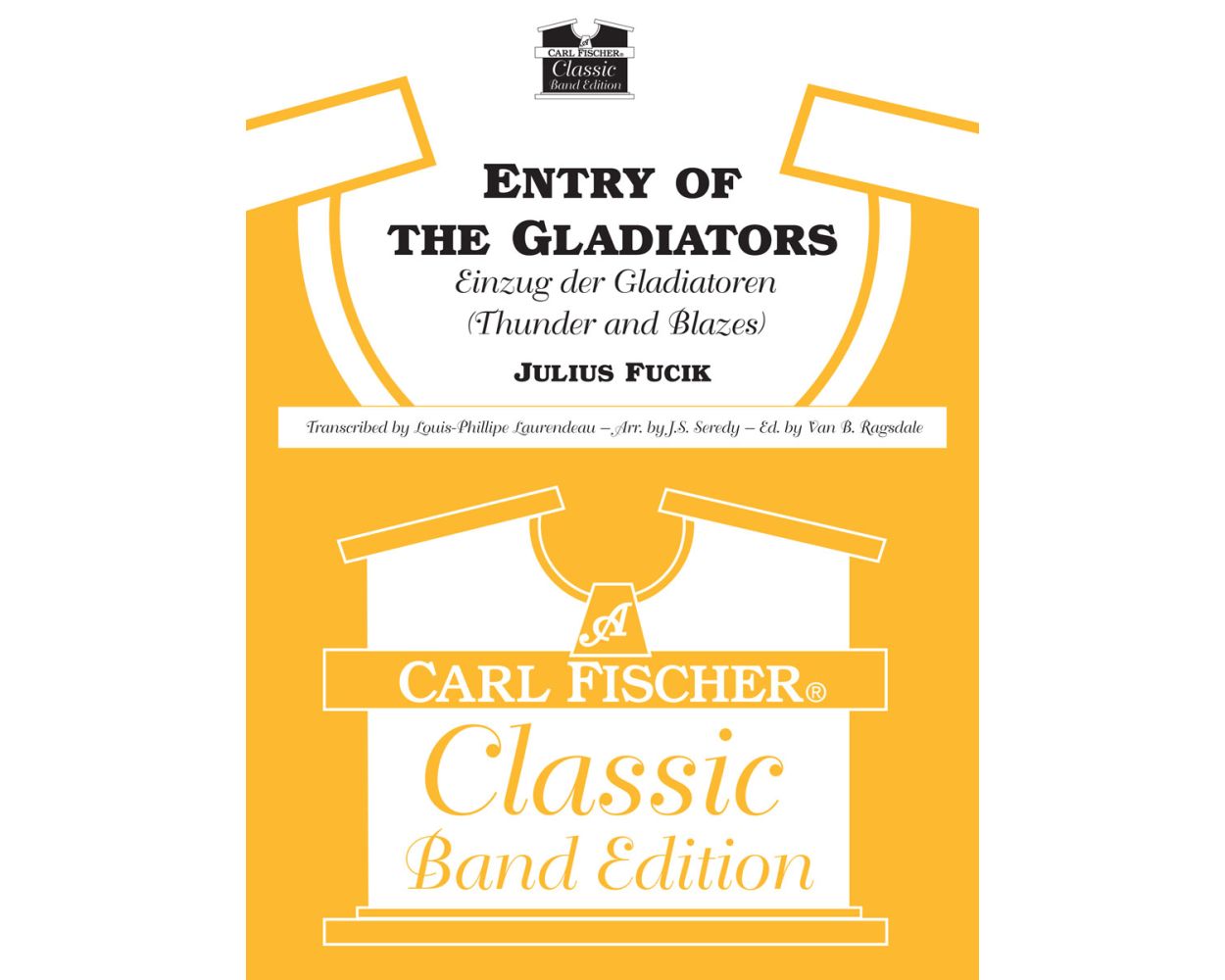 £72.00
£72.00Entry of the Gladiators - Julius FuÄÃk
One of the most popular European-style marches, Entry of the Gladiators is best-known to many listeners as the entry music of the traditional circus. This popular classic, with its oh-so-hummable trio, is presented here in a first-class edition for concert band that will light up any program by a group that can tackle it with the requisite energy and fire.
Estimated dispatch 12-14 working days
-
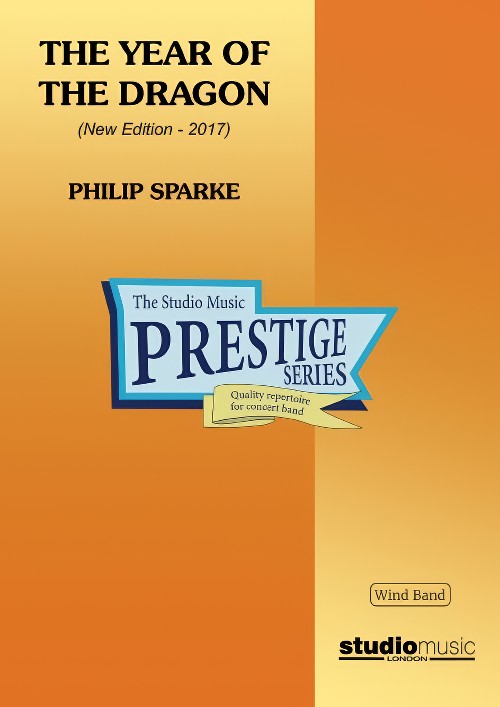 £37.95
£37.95The Year of the Dragon (Prestige Concert Band - Score only) - Sparke, Philip
The 2017 version of The Year of the Dragon was commissioned by the Siena Wind Orchestra and given its world premiere on June 17th 2017 in Bunkyo Civic Hall, Tokyo, conducted by the composer.The original wind band arrangement of The Year of the Dragon was made in 1985, a year after the composer wrote the brass band version. At that time he was still learning the intricacies of writing for wind band (and still is!) and in the 32 years which have elapsed since then, his approach to scoring for the medium has developed and, hopefully, improved.Here are the main differences between the two versions:In the 1980's, the wind band movement was much less international than it is now. British wind bands were still to some extent based on the military band tradition of the time, which tended to use rather smaller instrumentation than the then-dominant American university model. The new version embraces a much more international instrumentation, including low woodwinds and string bass, as well as an expanded percussion section.In the original version there was a touch of naivety in the way the composer wrote for the woodwinds; much of their articulation was transferred too literally from the brass version, resulting in some unidiomatic writing, which he has tried to improve in the new version.In addition to the above, Philip's own compositional style has matured and developed in the intervening 32 years. There are some passages in the original which he simply would not write today - not because they are 'wrong', but because his way of writing has changed. The new version is perhaps how he would have written it today, rather than simply dressing the original version in new clothes.The work is in three movements:Toccata opens with an arresting side drum figure and snatches of themes from various sections of the band, which try to develop until a broad and powerful theme from the middle of the band asserts itself. A central dance-like section soon gives way to the return of this theme, which subsides until faint echoes of the opening material fade to a close.Interlude takes the form of a sad and languid solo for alto saxophone. A chorale for the whole band introduces a brief spell of optimism but the saxophone solo returns to close the movement quietly.Finale is a real tour-de-force for the band with a stream of rapid semi-quavers running throughout the movement. The main theme is heroic and march-like but this is interspersed with lighter, more playful episodes. A distant fanfare to the sound of bells is introduced and this eventually returns to bring the work to a stirring close.
Estimated dispatch 7-14 working days
-
 £199.95
£199.95The Year of the Dragon (Prestige Concert Band - Score and Parts) - Sparke, Philip
The 2017 version of The Year of the Dragon was commissioned by the Siena Wind Orchestra and given its world premiere on June 17th 2017 in Bunkyo Civic Hall, Tokyo, conducted by the composer.The original wind band arrangement of The Year of the Dragon was made in 1985, a year after the composer wrote the brass band version. At that time he was still learning the intricacies of writing for wind band (and still is!) and in the 32 years which have elapsed since then, his approach to scoring for the medium has developed and, hopefully, improved.Here are the main differences between the two versions:In the 1980's, the wind band movement was much less international than it is now. British wind bands were still to some extent based on the military band tradition of the time, which tended to use rather smaller instrumentation than the then-dominant American university model. The new version embraces a much more international instrumentation, including low woodwinds and string bass, as well as an expanded percussion section.In the original version there was a touch of naivety in the way the composer wrote for the woodwinds; much of their articulation was transferred too literally from the brass version, resulting in some unidiomatic writing, which he has tried to improve in the new version.In addition to the above, Philip's own compositional style has matured and developed in the intervening 32 years. There are some passages in the original which he simply would not write today - not because they are 'wrong', but because his way of writing has changed. The new version is perhaps how he would have written it today, rather than simply dressing the original version in new clothes.The work is in three movements:Toccata opens with an arresting side drum figure and snatches of themes from various sections of the band, which try to develop until a broad and powerful theme from the middle of the band asserts itself. A central dance-like section soon gives way to the return of this theme, which subsides until faint echoes of the opening material fade to a close.Interlude takes the form of a sad and languid solo for alto saxophone. A chorale for the whole band introduces a brief spell of optimism but the saxophone solo returns to close the movement quietly.Finale is a real tour-de-force for the band with a stream of rapid semi-quavers running throughout the movement. The main theme is heroic and march-like but this is interspersed with lighter, more playful episodes. A distant fanfare to the sound of bells is introduced and this eventually returns to bring the work to a stirring close.
Estimated dispatch 7-14 working days
-
 £244.99
£244.99Voyage au Centre de la Terre (Journey to the Centre of the Earth) (Concert Band - Score and Parts) - Janssen, Harrie
This composition was based on the world-famous novel by the French author Jules Verne. This novel describes the attempt to reach the centre of the earth. The descent of the crater of the volcano called Snaeffels, situated in Iceland, marks the beginning of this voyage to the sublunary world. The German geologist, professor Lidenbrock, is accompanied on this trip by his nephew Axel and an Icelandic guide named Hans. The last mentioned will be helpful in many occasions.Dark colours & mist: The composer tried in this single work to give a musical expression to various significant moments from this novel. In the introduction he sketches an image of the dismal ambience on the island by using dark colors. Rising fragments of mist reveal the flanks of the monumental mountain Scataris. The composer tries to catch this image in a majestic and broad chorale.Away from Iceland: Subsequently the ostinato rhythmicity and virtuosity represent the hectic descent of the crater of the volcano. The party descends ever more and more and travels south, away from Iceland. On the way, they see all kinds of rock formations, fossils and minerals. At a depth of thirty hours walking distance, at about 150 kilometres below the surface, they reach a sub terrestrial sea which is called the Lidenbrock sea.Genuine eruption of sounds: Strange electric manifestations and unpredictable weather conditions accompany this singular phenomenon. An orchestral tutti-episode expresses this impression musically. On a make-shift raft, the party continues its voyage, heading to the south coast of this huge sea. Once ashore, an enormous rock obstructs the passage. The blowing up of this obstacle unleashes a genuine eruption of sounds in the orchestration.Spat out by the volcano: But the explosion has an unforeseen side effect. The sea - travellers and raft included - is sucked upwards into a dark hole. Again, our heroes are accompanied on their involuntary voyage, while left to fend for themselves, by an ever increasing ostinato rhythmicity. Before an eruption can destroy the raft, the threesome manages to escape and climb up through a cave towards the daylight. They seem to be spat out by the Stromboli volcano on the island of Sicily, far from home. The composition ends with triumphant sounds that represent the scientific triumph of these adventurers.Duration: 22.00
Estimated dispatch 7-14 working days
-
 £244.99
£244.99Journey to the Centre of the Earth - Harrie Janssen
This composition was based on the world-famous novel by the French author Jules Verne. This novel describes the attempt to reach the centre of the earth. The descent of the crater of the volcano called Snaeffels, situated in Iceland, marks thebeginning of this voyage to the sublunary world. The German geologist, professor Lidenbrock, is accompanied on this trip by his nephew Axel and an Icelandic guide named Hans. The last mentioned will be helpful in many occasions. Dark colors & mist The composer tried in this single work to give a musical expression to various significant moments from this novel. In the introduction he sketches an image of the dismal ambience on the island by using dark colors. Risingfragments of mist reveal the flanks of the monumental mountain Scataris. The composer tries to catch this image in a majestic and broad chorale. Away from Iceland Subsequently the ostinato rhythmicity and virtuosity representthe hectic descent of the crater of the volcano. The party descends ever more and more and travels south, away from Iceland. On the way, they see all kinds of rock formations, fossils and minerals. At a depth of thirty hours walking distance, atabout 150 kilometers below the surface, they reach a sub terrestrial sea which is called the Lidenbrock sea. Genuine eruption of sounds Strange electric manifestations and unpredictable weather conditions accompany thissingular phenomenon. An orchestral tutti-episode expresses this impression musically. On a make-shift raft, the party continues its voyage, heading to the south coast of this huge sea. Once ashore, an enormous rock obstructs the passage. The blowingup of this obstacle unleashes a genuine eruption of sounds in the orchestration. Spat out by the volcano But the explosion has an unforeseen side effect. The sea - travelers and raft included - is sucked upwards into a dark hole.Again, our heroes are accompanied on their involuntary voyage, while left to fend for themselves, by an ever increasing ostinato rhythmicity. Before an irruption can destroy the raft, the threesome manages to escape and climb up through acave towards the daylight. They seem to be spat out by the Stromboli volcano on the island of Sicily, far from home. The composition ends with triumphant sounds that represent the scientific triumph of these adventurers.
Estimated dispatch 7-14 working days
-
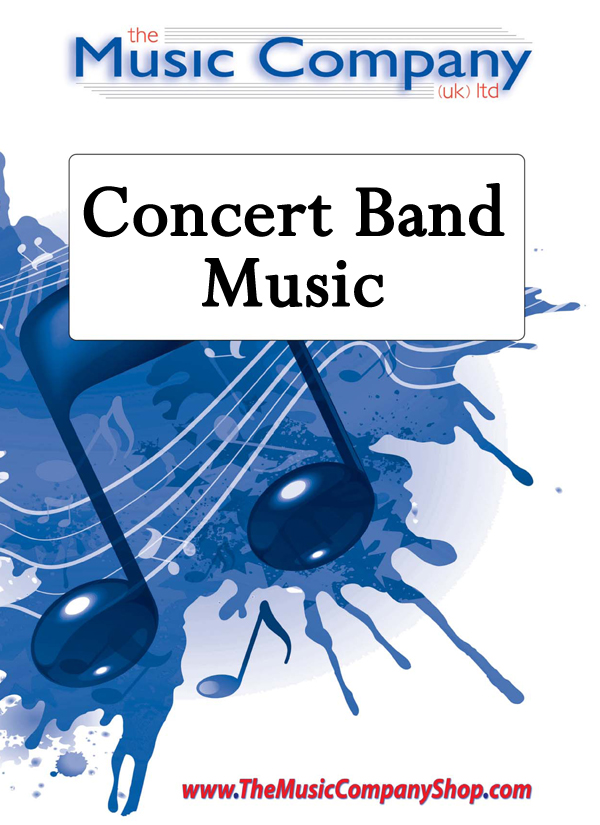 £55.00
£55.00Procession of the Regal Scepter - Arthur J Michaels
Programme notes from the composer, Arthur J Michaels:"Procession of the Regal Scepter," (Grade II level), captures the regal splendor and majestic grandeur of processions, inaugurations, coronations and other stately ceremonies past and present, here and abroad.The piece begins with dignified legato phrases. A middle section features the brass instruments in a more punched, staccato style, followed by the woodwinds' antiphonal response. The piece then restates both the legato phrases of the beginning and the antiphonal staccato portions, and the piece ends in a stirring finish."Procession of the Regal Scepter" is within reach of less experienced bands yet suitable for more experienced groups. Ample doubling and cues let bands with limited or uneven perform the piece successfully. The piece's plentiful cuing allows for great performance flexibility. For this reason, "Procession of the Regal Scepter" works well in any concert program.
In stock: Estimated delivery 1-3 days
-
£114.00
The Gate of the Guardians (CB) - Jelle Van Giel
The Gate Of The Guardians tells the story of angel guards protecting man against evil. The intro shows the powerful gate with all its keepers, as well as the beautiful place where they live. Then we go on an adventure with them and undertake long trips through beautiful landscapes and colossal mountains to find the people they need to protect. There they come into contact with evil. They must and will expel them! You hear the cries of the guards during their fight. They conquer evil, after which everything calms down and people return to their village. Finally, they sing their hymn around the big campfire as a word of thanks to the guards.
Estimated dispatch 7-14 working days
-
£113.00
Stations of the Cross (CB) - Dominique Fonteyn
Stations of the Cross tells the story of a real tragedy. In the dramatic opening, we hear the euphonium announce the bad news. The character is trying to process all but doesn't succeed, lots of emotions result in a lament. An inner conflict arises between the emotional and the rational. Over time, he manages himself to take back control but events keep him bother. This is reflected by the continued drums until we suddenly arrive in the lento abbandono. We are witnessing a redemptive event and the grandioso that follows reflects a lot of happiness. Life can finally go on.
Estimated dispatch 7-14 working days
-
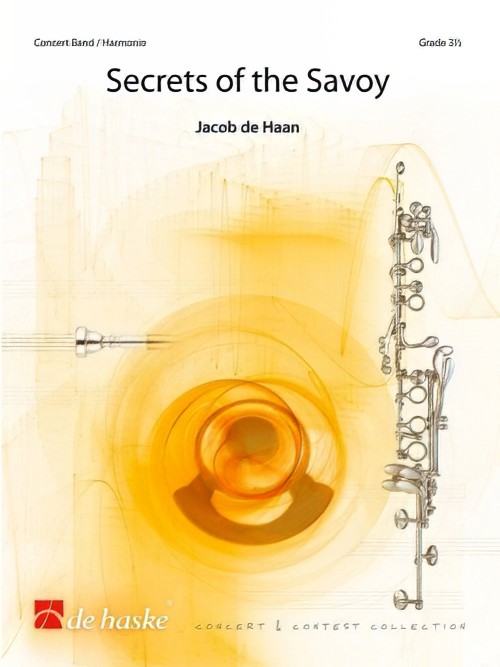 £106.99
£106.99Secrets of the Savoy (Concert Band - Score and Parts) - De Haan, Jacob
This composition musically reveals the secrets of the former Duchy of Savoy. The slow, almost magical beginning describes the beautiful mountain location of the merged villages of La Motte-Servolex. The vastness of the Alps is echoed in the lyrical theme, which is followed by a faster, march-like section. After the romantic, almost religious middle section, the fast motif returns and the composition ends with a blissful final theme.Duration: 9.30
Estimated dispatch 7-14 working days
-
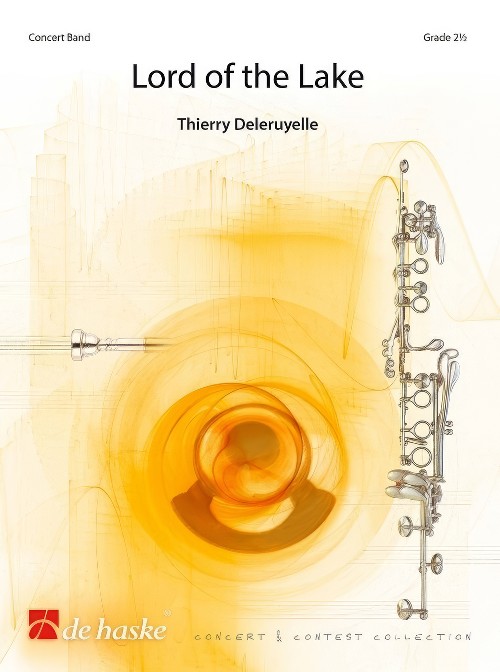 £87.99
£87.99Lord of the Lake (Concert Band - Score and Parts) - Deleruyelle, Thierry
Lord of the Lake is a work in three separate movements which tells the legend of the Sea of Flines. Stphane Coquet, the conductor of the Flines-lez-Raches concert band, wanted to celebrate the 140th anniversary of his band by commissioning this work. The piece can be performed either on its own, or with a narrator who intervenes between each movement, telling this legend where children and their parents thwart the cruelty of a lord holed up in his castle.Duration: 7.15
Estimated dispatch 7-14 working days
